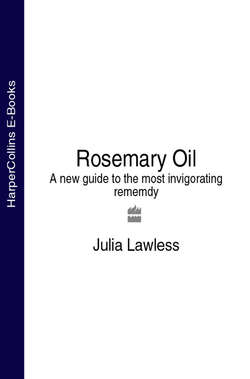Читать книгу Rosemary Oil: A new guide to the most invigorating rememdy - Julia Lawless - Страница 5
Contents
ОглавлениеCover
Title Page
Copyright
Dedication
Rosemary Oil – An Introduction
Part I: A Medical and Historical Background
1 The Herb of Remembrance
2 A Traditional ‘Cure All’ Folk Remedy
3 Rosemary Oil: Chemical Analysis and Clinical Research
4 Cultivation, Production and Quality Control
5 A Summary of the Properties and Applications of Rosemary Oil
6 Methods of Use, Safety Data and Storage Precautions
Part II: A–Z of Health and Beauty Applications:
amenorrhoea (absent/irregular periods); arteriosclerosis; arthritis; asthma; boil (furuncle)/abscess; bronchitis; bursitis; carbuncles; cellulite; chilblains; colds; colitis; constipation; coughs; dandruff; debility (nervous); depression; disinfectant; dysmenorrhoea (period pain); dyspepsia (indigestion) and flatulence; faintness/dizziness; fever; flu; gout; hair care; hangover; headaches; immune system (to strengthen); insect repellent; jetlag; laryngitis; liver problems/congestion; low blood-pressure (hypotension); lumbago; migraine; mouth and gum infections; muscular aches and pains; neuralgia; oedema (fluid retention); palpitations (tachycardia); perfume; perspiration (excessive); pets/animal care; rheumatism; sciatica; sinusitis; skin care; sore throat; sprains; stress; varicose veins; whooping cough
Keep Reading
Appendix A: Recipes Using Rosemary
Appendix B: The Constituents of Rosemary Oil
Bibliography and Further Reading
References
Useful Addresses
Acknowledgements
Other Books By
About the Publisher
